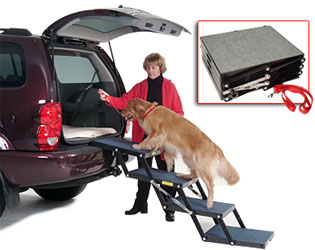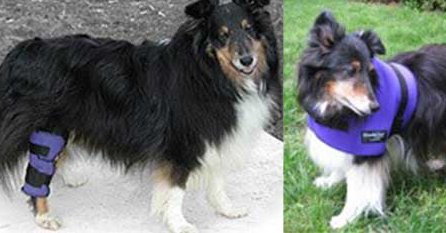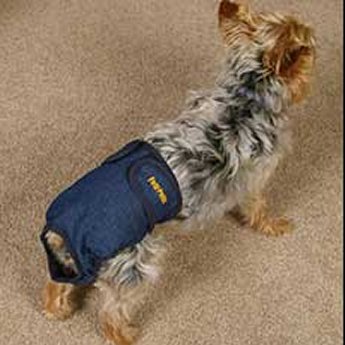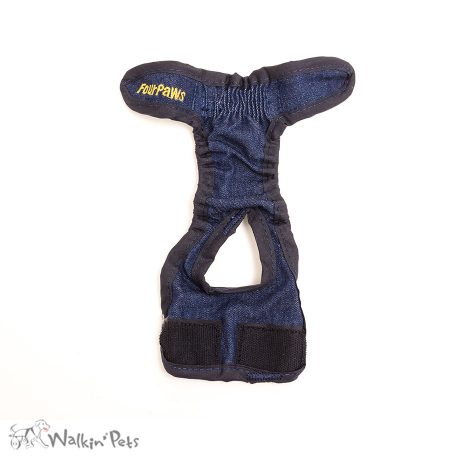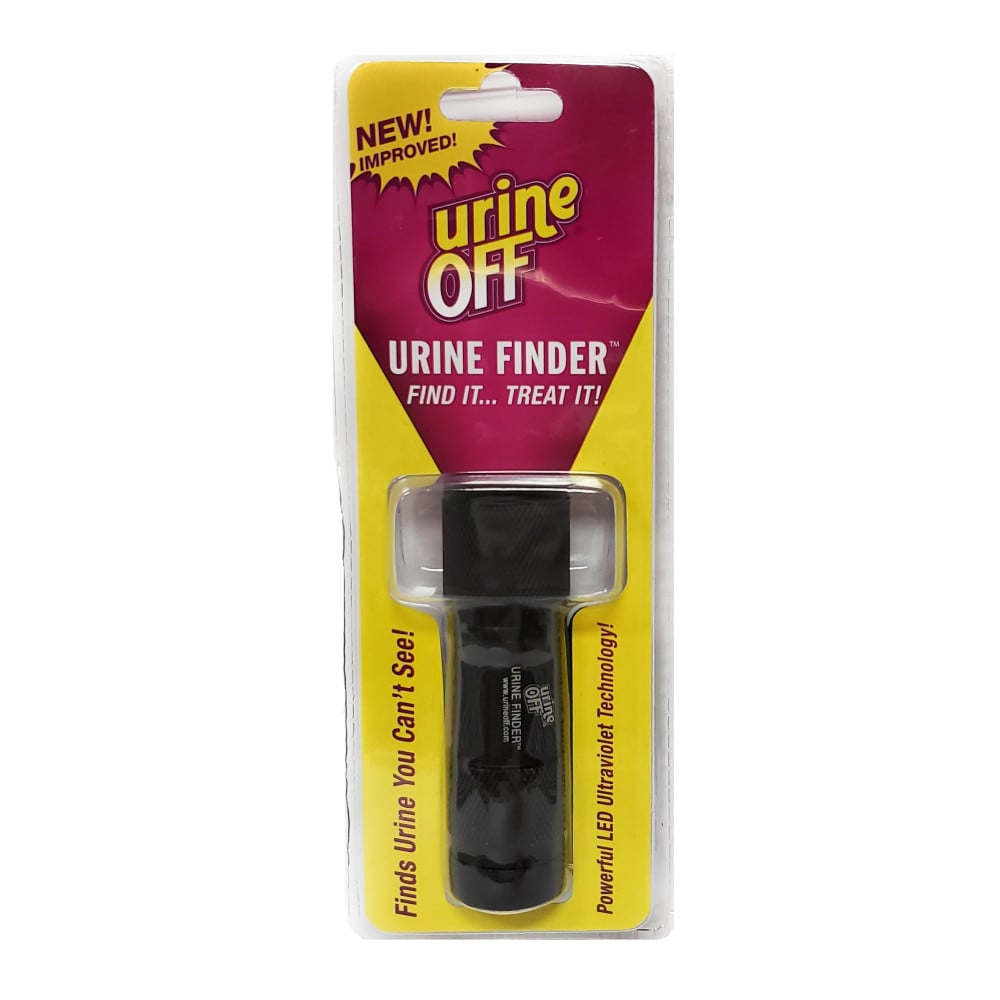Caring for a Sick or Injured Dog After Surgery or other Treatments
You are the most important factor for how quickly your dog gets better, medication or treatment regimen is secondary.
When it comes to feeling comfortable, safe, and grounded, there's no place like home and that's never more true than when you're recovering from an injury or illness. That's no less true for your dog than it is for you. Home care doesn't have to be expensive but there are products that can make recovery quicker and more complete.
If you've ever had an extended stay in a hospital, you know that returning home afterward involves at least two strong positive emotions. First, it feels great to be back in familiar surroundings. Second, being home sends a strong signal that you can start getting back to normal. You're on the road to being healthy again, even if for the moment you have to spend extra time resting, doing physical therapy, or taking medication to complete your treatments. At times like this, social interaction is not immediately import, rest, quiet and your loving care is more important than doggie friends.
Fortunately, most dogs have few illnesses or injuries that require lengthy hospitalization. Those that do, however, have much the same experience as humans - perhaps more so as dogs are pack animals and are lost without their pack. It's important to visit often when your dog is hospitalized - and leave something familiar with him - a toy, your old T-shirt, something. It will give him security and let him know he's not abandoned by his pack.
Once your dog is home again, away from the unfamiliar, frightening noises and smells of the veterinary hospital he can start to relax. During his convalescence take extra care and giving extra attention. The difference, however, is that she can't do the second part for herself-that's your job. In most cases, your vet will release your dog into your care once he or she is confident that you can provide adequate nursing. At that point, the doctor will give you detailed instructions on how you should care for the dog. This is the time to ask if auxillary items would benefit his recovery. There are a wide variety of orthopedic support devices available to provide wrist, hock, knee and hip support. If you don't think you'll remember everything, ask for a written version. Have your vet demonstrate anything you are uncertain about doing, such as how to give pills or liquid medication. Also ask who you should call if an emergency develops in the course of your dog's recovery. Find out what kind of devices would aid in his recovery. Most people don't realize, almost anything available for humans is available to dogs. Braces, splints, booties, slings, stretchers and diapers for example. Often vets suggest 24/7 crate rest when if the dog had a splint or brace to support the injured leg, they could have limited mobility (making them MUCH happier). Even a stroller can help when a dog is prescribed serious crate rest, it allows him with your help to get out of the house. 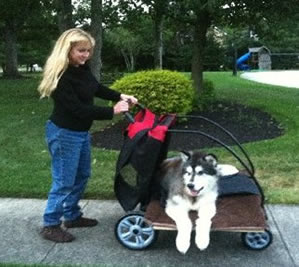
When life sends you lemons make lemonade. A dear friend's dog was having problems walking due to steroids taken for an illness...so she adapted a stroller by adding a platform so they could continue their daily "walks".
When you bring your dog home from the hospital, you may have to give her medicine, keep a close eye on a surgical wound, change bandages, or monitor her vital signs, keep him from walking on an inured limb or one that has had surgery.. During this time, physical support is important. Nutrition and feeding are very important and she may need your help to eat. As she recovers, your dog needs extra rest and sleep and you can lend a hand with that as well.
Finally, the pain and trauma of the injury or illness and the hospital experience may have a psychological effect on your dog. He may be afraid of you or leery of anyone touching her, sometimes to the point of snapping or biting. It's up to you to ease her anxieties with gentle care and attention, letting her know that she's safe and that you'll watch out for her until she's back to her old self.
First Things First: A Clean, Quiet Place To Heal
Since rest and sleep are two of the best therapies for helping your dog get better, you need to make up a quiet, low-traffic "recovery room." Your dog needs a dry, warm, draft-free place to recuperate. You may want to look into dog medical equipment that can speed healing. If you need to, keep her snug with a hot water bottle or heating pad (well covered to make sure she won't burn herself). Darken the room by pulling the shades or blinds. A soft orthopedic bed is very helpful and if you have other pets, sometimes a secure den using an x-pen and a couple of sheets can be just the ticket.
Creating a low-traffic room means taking good care of the dog but not fussing over her. You should only disturb her for feeding, medication, toilet trips, and cleaning unless she wants to be more sociable.. If you have kids and they miss seeing their dog, set "visiting minutes"-in other words, a special time for them to see her-and make sure they understand the need to be quiet and to not handle the dog or touch her wounds or bandages.
You also need to set up a "hospital bed" for your pet. Whatever you use for bedding, make sure you have easy access to clean her and, if necessary, change her bandages. Towels are absorbent and work well under an incontinent dog that is not mobile. They are easy to wash if placed over a plastic barrier. If the dog is more mobile, you'll probably prefer diapers. In any case, cover the bedding with a sheet that you can wash easily and change it whenever it is soiled.
If your dog is lying on a hard surface, she might develop bedsores. These bleeding sores or puss filled sores occur because her weight is "suffocating" the skin. As her body presses against the floor, it squeezes off the blood supply to the tissues. Eventually the smaller blood vessels clot and a red sore patch appears, and if this is left untreated, it can crack open and develop into a crater like, painful wound. In the worst cases, tissues can even erode until the bones are exposed. So make sure your dog has something soft between her and the floor. A foam rubber pad or waterproof orthopedic bed under the plastic is a good solution. You can even get special veterinary bedding designed to reduce the occurrence of these sores. It also helps if you can move or turn your dog so she's not always lying in the same position, if it's ok with your vet. Even with these precautions, your dog may still develop bedsores. If she does, treat them with an astringent agent such as Mercurochrome, triple dye or acriflavin.
Make Sure They Get Enough Fluids
Making sure your dog gets enough liquids is the most important part of her nursing care. Loss of body fluids and salt is much more dangerous than going hungry: this can cause her kidneys to shut down and even damage them permanently. So regardless of how sick she is, be certain she gets 7 ounces for every 2 lbs body-weight (or 20 milliliters per kilogram of body-weight) each day. If she's drinking on her own, keep her water dish full, clean and fresh. If she won't drink on her own, use a turkey baster to put liquid into the side of her mouth. One of the easiest ways to accomplish this is inserting the liquid between the outer surfaces of her molars and her cheek. Place your finger in that space and pull her cheek out slightly to make a "pocket," then pour or squirt small amounts inside. This works best if you tilt your dog's muzzle up and hold it there until you remove your finger and she swallows. Be careful not to raise the muzzle too high or give her too much because she might choke. If your dog will not take fluids orally despite your best efforts, call your vet; your dog may have to receive her fluids intravenously.
Be on the lookout for signs of dehydration. One of the first signals is decreased elasticity of the skin, which you can test by picking up a fold from the middle of her back and then letting it go-the skin should spring immediately back into place. If it returns slowly or creates a tent, the dog is dehydrated. Other signs include drying of the mucous membrane inside the mouth and eyes, sunken eyes, and some appearance of shock. If you notice any of these signs, call the vet at once.
If your dog is vomiting or has diarrhea, her chances of dehydrating increase. With diarrhea, concentrate on replacing her fluids, but you can also try human kaolin or other diarrhea mixtures to control her bowel movements. With vomiting, give her a half a teaspoon of milk of magnesia to help the problem. If you have doubts, check with your vet before giving her these substances.
Feeding Your Ill Dog
Good nutrition is always important for your dog, but it is especially so when she's recovering from an injury or illness. In fact, the balance of nutrients she needs may be different during the time she's recuperating-more protein to promote cell repair and fight infection, more fats and carbohydrates for the extra energy needed, and certain vitamins and minerals that promote healing. Check with your vet to see what you should be feeding the dog as she gets better and follow these tips to make eating easier for your ailing pet:
- Feed her a little at a time and often-for example, divide the daily allowance of food into two to four small meals.
- Warm the food to just below your dog's body temperature. Do not give her really hot food.
- Leave the food down 10 or 15 minutes and then remove it (after she finishes eating, of course). Dogs are more likely to eat fresh food than a dish that's been sitting out for a while.
- Our dogs have always loved yogurt, tuna, or salmon when they wouldn't eat anything else. It's worth a try - bland people food will usually be a better choice than dog food or the canned stuff the vet gives you.
- Some dogs like a little spice.. Ask your vet about what flavorings would be acceptable for your dog. Of course, your dog just may not feel like eating. If this is the case, you'll have to force-feed her. The easiest way to accomplish this is liquefy the food by adding water and then feed it to her as a fluid (use the method described above). Again, give her several small meals (a few teaspoons of food every 2 to 3 hours) rather than one large one. If you give her too much, she may vomit it back up.
How to best care for a recovering dog
If the weather is favorable and your dog is up to it, let her outdoors to relieve herself, but always keep her on a lead and, if the conditions are cool or cold, protect her with a coat. Taking the dog out for her toilet is more pleasant for you, of course, but it also will keep your house-trained dog from suffering mental anguish if she has to relieve herself indoors. Dogs that are well potty-trained will feel bad when they go inside.
If she can't go out, make sure the room she's in has a vinyl or sealed floor (not carpet or hardwood) and cover the floor with thick layers of newspaper over plastic.. Clean the room and her bed daily, remove any urine or excrement immediately, and if you can, groom her once a day.
If your dog is incontinent, place dog potty pads under her rear end to keep the bedding dry and cotton between her thighs and under her tail. You want to keep urine off tender tissues to prevent urine burn. Sponge this area with weak antiseptic and warm water several times a day and dust her rear end and abdomen with talc. If she has diarrhea, use zinc ointment in the same way. This will be a necessity with a quadraplegic or paraplegic dog or even a weak dog, as it will be difficult to get an ill or injured dog to go outside without some kind of equipment such as a sling, harness or wheelchair.
Giving Medicine To Your Dog
One of the primary rules in getting your dog better is making sure she gets her medicine on time. Another is following the full course of treatment prescribed by your veterinarian - in other words, don't stop giving the medicine just because your dog seems better. If you think your dog is having an adverse reaction to the medication, however, call the vet right away and ask for instructions.
Medication for your dog may come in pills or in a liquid. If it's the latter, use a syringe or bottle as described earlier. For pills, it doesn't seem to matter how inventive you are about disguising the medicine with food or special treats: dogs always know, and more often than not spit it out. Pill pockets are a good alternative for some dogs but to be sure that the medicine is going down, try this:
- Hold your dog's muzzle with one hand and tilt her nose up at a 45° angle. Talk to her while you are doing this; reassure her verbally and pat or stroke her head. Press gently inward on her upper lips to get her mouth open.
- To prevent your dog from clamping her mouth shut on your fingers, keep her upper lips rolled inward between her teeth and your fingers. If you have a large dog, use your opposite hand to open her mouth and place the pill as far back over the base of the tongue as you can. If the pills are not in the center of the tongue or back far enough, your dog will spit them out.
- Quickly remove your hand so your dog can close her mouth. Keeping her head up will encourage her to swallow; if that fails, stroke her throat until she does. If your dog licks her nose, most likely the medication has gone down.
- If you have a small dog, the procedures vary slightly. Grasp the pill between your thumb and forefinger, use your third finger to hold the bottom jaw open and place the pill over the base of the tongue. If your dog is too small or your fingers too large, take aim and shoot: drop the pill over the back of her tongue rather than placing it.
- If your dog is more mule than canine and nothing you try succeeds, ask the vet to administer the pills or give your pet the medication by injection.
How to apply medicines to the eyes.
- Using your thumb or forefinger, gently roll the lower eyelid down and squeeze the ointment into the exposed area or
- Keep your dog's nose tilted upward slightly, grasp the dog's muzzle and hold the lower eyelid open, rest the base of the hand holding the dropper bottle above her eye to hold the upper lid open and drop in the medication.
- When you administer eye drops or ointment, stand behind your dog so she won't feel threatened. To avoid contaminating the medicine, make sure you don't touch her eye with the end of the ointment tube or the eye drop bottle.
Caring for Wounds
For most dogs, the sutures and the bad-smelling topical preparation around an incision are enough to stop them from attacking the wound, but some dogs will chew at any injury no matter what. If your dog does this (you may be able to tell before she comes home from the hospital), ask your vet for an "Elizabethan" collar (the one that turns your dog into a reverse conehead). There are many other options that are not as awkward as a 'cone' as well. This device keeps her from reaching the wound area with her teeth and tongue but allows her to eat and drink.
If your dog has a wound or incision that needs to be dressed while she recuperates at home, ask your vet for instructions or have the vet demonstrate the procedure. Make sure to get a list of the materials you will need to clean and re-bandage the injury (gauze, sterile pads, topical ointments, and so on). Also, ask your vet to describe how the wound should look as it heals and how it may look if it's not healing (for instance, what signs indicate infection or wound degradation). Finally, check to see if you should restrict your dog's activity-for example, keeping her away from kids or other animals-to help keep bandages, splints and wounds intact.
Since having a wound dressed is never a pleasant experience (there is no such thing as an "ouchless" Band-Aid), your dog may snap or nip at you when you are changing a bandage or cleaning a wound. If she does, you may have to muzzle her while you do this for your own protection and for her well being. If done correctly, muzzling doesn't hurt your dog or interfere with her breathing in any way. Here's an easy way to keep your dog's mouth shut while you work:
- Using a long strip of rope, heavy cord, gauze or a handkerchief, panty hose leg, form a loop and slip it over your dog's jaw as far as possible.
- Draw the loop tightly around her jaw, bring the ends under her chin and tie them together.
- Bring an end along each side of your dog's head, tying them firmly together at the nape of her neck.
Also having the right bandaging materials can make a huge difference. Ask your vet for extra supplies if possible. One thing we've found invaluable in dressing dog wounds are products called vet wrap and elastikon. They adhere to themselves and are good for bandaging hard to bandage places like legs.
Canine ICU: Monitoring Your Dog's Progress
Tracking your dog's progress is an important part of recovery. Of course, you won't have the sophisticated heart monitors, CT scans, or magnetic resonance imaging that you see on ER. All you'll have is a notebook and a pen (or laptop), but that's enough. If you keep regular and accurate records, the information is invaluable for your vet. At the very least, you should:
- Take your dog's temperature at least once a day (preferably at the same time) and record it.
- Record how much your dog eats or drinks, the frequency of urination, and the type of bowel movements.
- Record the times and amounts of medication given.
- Record any unusual symptoms or any change in her condition.
- Your vet might also ask you to take your dog's pulse or watch for other specific developments that indicate the healing is going well or that problems might be developing.
- Make sure to have the dog wear any splints, boots, braces, or hock and wrist supports recommended. They will lessen the chance of re-injury.
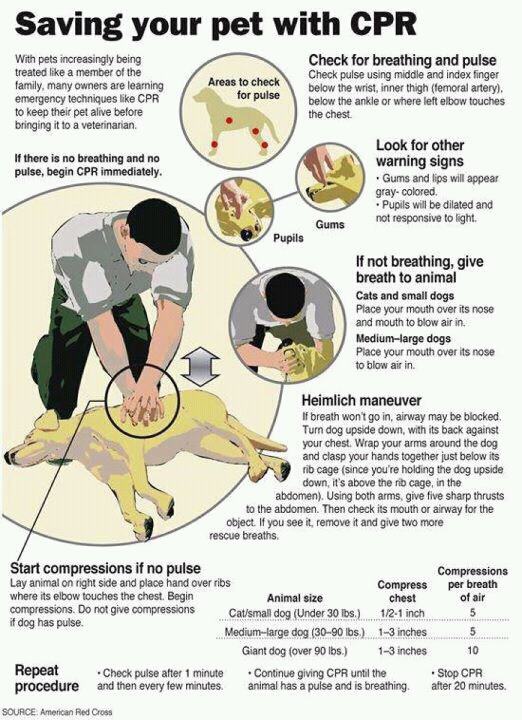
Taking Your Dog's Temperature
A thermometer is indispensable for taking care of your sick dog. Normally, a dog's temperature is between 100°-103°F (38.3°C-39.2°C). Since dogs are not as efficient as people in regulating their temperature, their standard temperature varies more. Your dog's body heat will be naturally higher after exercise, on a hot day or under a warm blanket. Use a rectal thermometer to take your dog's temperature. (If you like high tech, you can purchase a digital read-out, rectal thermometer that beeps when it's finished.) Do not use an oral thermometer because the glass is thinner and the mercury bulb might break.
Here's how it's done:
- Shake the mercury down below 99° F (32°C).
- Spread some petroleum or KY jelly on the tip of the thermometer.
- Holding your dog's tail up with one hand, gently insert the thermometer into her rectum and hold it there for about 3 minutes. You can do this while your dog is standing, sitting or lying down; standing is the easiest. (You might need to get someone to hold her steady.)
- For an accurate reading in small dogs, insert the thermometer about one inch; for large dogs, insert the thermometer until about half the length is inside.
- Extract the thermometer and roll it back and forth between your fingers until you see the thin red mercury column inside. Note where the column stops. Large marks indicate one degree; each small mark is two tenths of a degree.
- If your dog has a high temperature, she probably will not be eating and she will show signs of lethargy. Call your vet as soon as possible if you observe this behavior.
Taking Your Dog's Pulse
If your vet ever asks you to monitor or take your dog's pulse, try this method:- Use your index and middle fingers to feel inside the hind leg just below the point where it joins the body (a large artery resides there).
- Find the pulse and count the number of beats that occur in 6 seconds and multiply by ten. A normal pulse for a dog is between 80 and 140 beats per minute. A faster pulse usually indicates shock or fever; a weak or almost nonexistent heartbeat indicates that you should call the vet immediately.
Urine Burns
For Urine burn or sores a great product to use is Bag Balm. This is a lanolin product, so it will not cause a problem if the dog licks it. Wash the area well and dry it thoroughly. Ideally let it have a short time to the air to dry a bit before applying a coat of Bag Balm to the area. Gently rub it into the skin.
Leave any excess on the area because it will actually help to protect the skin from urine. Bag Balm was developed for use on dairy or milk cows to protect their udders from sores caused by the constant cleaning and use of milking machines.Keep the dog's hair short in the area and dry it well. By keeping the area dry and well lubricated with Bag Balm, you should be able to get any sores cleared up and prevent a reoccurance. Another product that may be helpful is Merl Norman Cleansing Cream. This cream should be used the same way as the Bag Balm. It helps the skin repair itself and leaves a coating that will help protect the skin from the urine. Powder can not help protect the skin from the urine the way the a cream can.
Bag Balm is useful in other situations too. If your dog has a dry, flakey patch of skin the Bag Balm can be gently rubbed into the skin to moisten it. Bag Balm is also ok to use on human skin as well. Zinc based creams (commonly used for diaper rash) on dogs is toxic if licked, so do NOT use this! Zinc oxide can cause intra vascular hemolytic anemia, gastrointestinal upset from direct irritation, and, potentially, multi organ failure.
Splinting a Dog's Leg
Before using a splint, it is important to ensure the size is correct, a small splint will compress the foot or leg, and a very wide one and will not give good support. Splints are plastic termodeformable, that can be heated up to adapt to the dog allowing it to adjust to the exact size needed. The angle should not be changed.
For their care and maintenance it is sufficient to wipe a damp cloth, eventually clean carefully with a brush the outside, it is not recommended to much wet it with warm water and SOAP.
The first few times that the splint is placed is better to have the help of someone to hold him or distract the dog. A front splint can be put on with the dog sitting. A rear splint should be placed with the dog standing if possible. Make sure the dog is clean and dry to avoid irritation or worse, ulcers. Always periodically check the splint to make sure it's not rubbing and creating sore areas.
It is recommended to put a band tubular or a cohesive elastic bandage loosely around the leg of the dog. The function of this band is to increase the comfort, should not be too tight, will cause the dog to better tolerate the splint. The splint is placed on the back of the leg, putting the velcro straps at the front, then place the pads of the dog at the bottom of the splint first, leaving toes relaxed, these of must protrude from the splint.
Place guards the front of the straps so that they are right in the middle of the front part of the leg of the dog for comfort. Strap the bottom strap first, making sure the dog leg is completely adjusted to the splint, then setting the upper strap, then the top one last.
Unless your veterinarian tells you otherwise, do not use the splint all day. At night the dog can sleep without it. After fissures or fractures of the dog's bones, a splint can speed healing. With certain certain neurological problems, use a splint meant to be used permanently. If the dog requires a permanent splint, it's even more important to monitor the skin for pressure sores.



